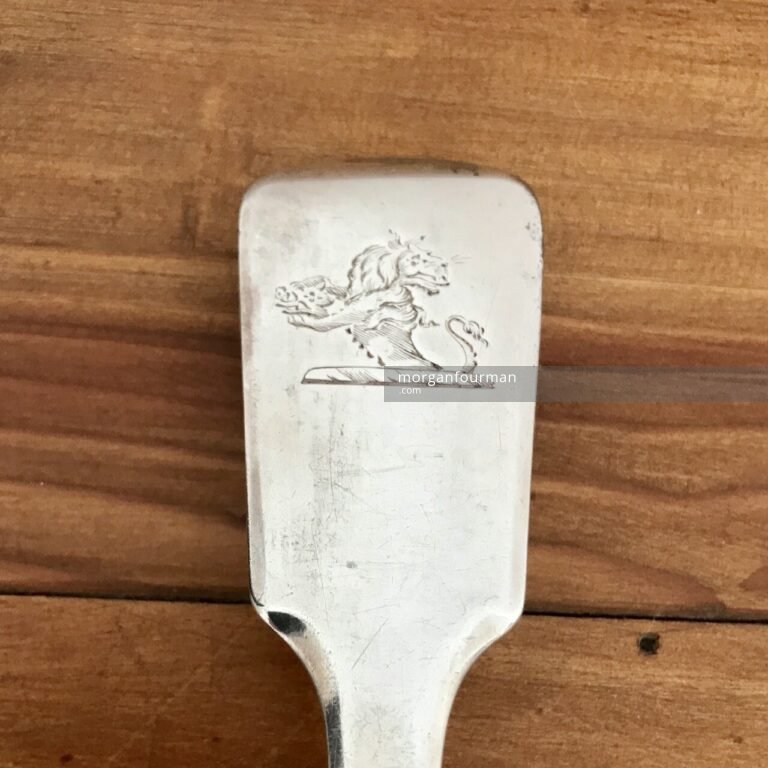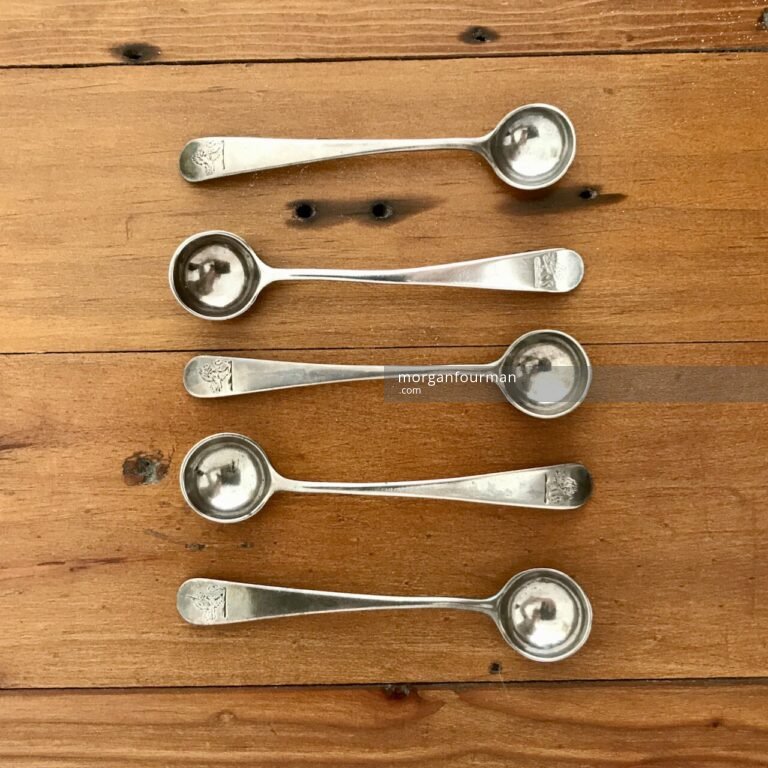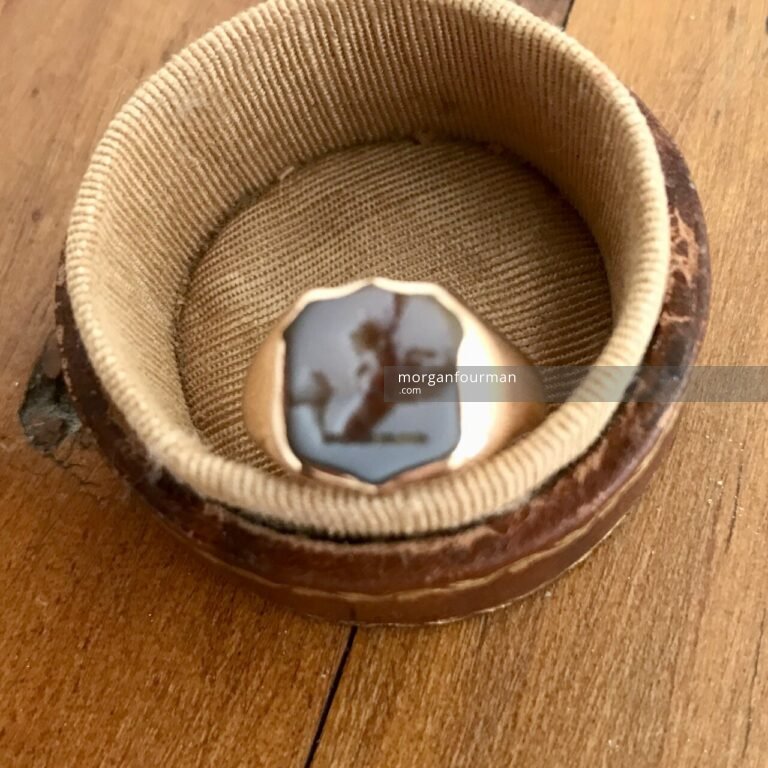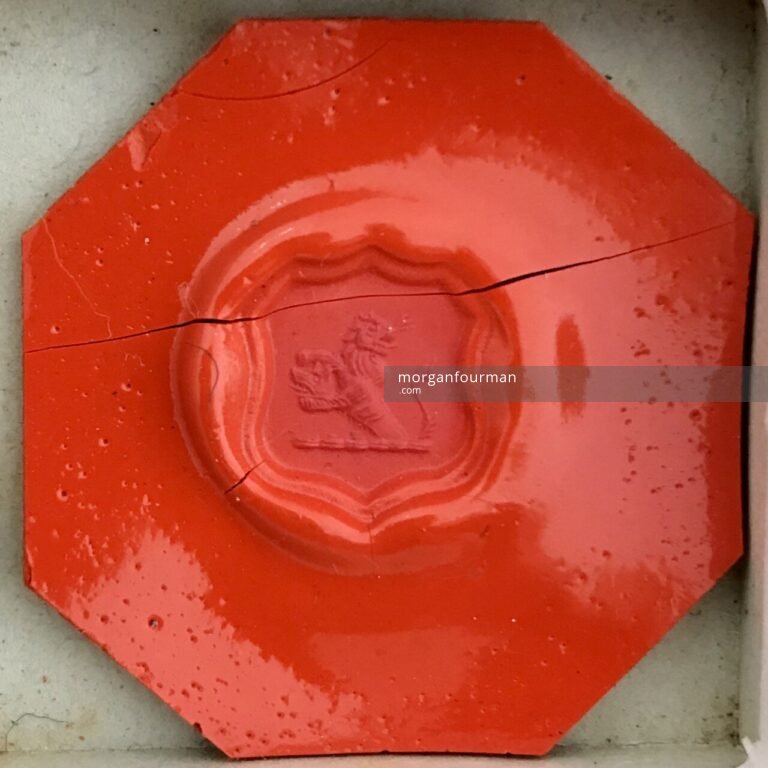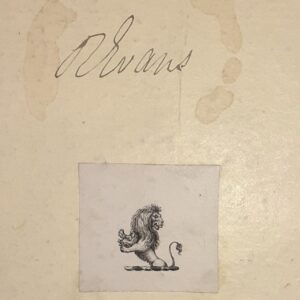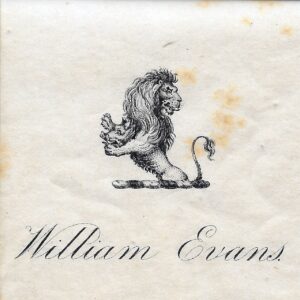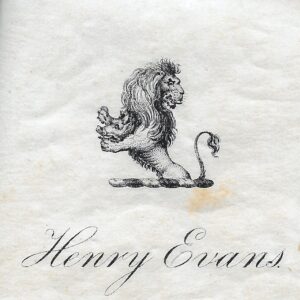When Richard Evans took over the Red Lion Inn in Wolverhampton, after his mother‘s death in 1792, he continued to build the coaching business he inherited. We do not know anything about the signage of the Inn but many objects depicting Lions have survived.
According to the Wolverhampton Chronicle Richard’s widowed mother had purchased the Red Lion Inn two years before she died. Richard Evans, a young man of 24, was clearly ambitious and highly capable. His marriage in 1793 to Sarah Styles showed an intent to establish the Lion as the premier coaching Inn in Wolverhampton. To a large extent he had succeeded in achieving this by 1805.
Earlier surviving artefacts bear the monogram ‘RE’ but the first silver items bearing a crest are hallmarked 1805. These are a pair of Silver Salts and five spoons all bearing a Lion crest.
This crest though is not a stylized pub sign but the Crest of Lord Carbery, George Evans.
The crest is a demi-lion, rampant regardant bearing a boar’s head. Although it is vaguely possible that the Evans family of Wolverhampton were very distantly related to the Irish Baronets, they certainly did not have any official right to call themselves armigers. It would appear to be nothing less than a fortuitous adoption of an appropriate symbol.
Given the limited information deduced about John Evans‘ origins, possibly born in Shifnal, Shropshire in about 1740, we know that Richard Evans could not be descended (at least through a legitimate line) from the first Lord Carbery or indeed any of his brothers, of which he appeared to have none, or his sons, all of whom seem to be well documented.
Certainly though, by the 1820’s the number of artefacts, including Bookplates, livery buttons, silver and a signet ring show that the Evans family from the Red Lion were using the lion crest frequently.
One suspects that when Richard Evans’ oldest son, another Richard married Mary Shaw-Hellier in 1824 that the use of the crest proliferated. Much of the silver that is crested is hallmarked between 1824 and 1826. This was the time that Richard Evans (senior) had retired and had first taken over a lease on Pendeford Hall. His son and new wife proceeded to live there together and a new young family was born.
The Red Lion Inn had been sold by 1820 and other coaching ventures from The New Inn in Wolverhampton seemed not to be as successful. All the signs were that the Evans aspired to be part of the landed gentry like the Shaw-Helliers and the crest, from this time on, can be seen as part of this aspiration
It is, of course, difficult to tell how this progression was regarded. Richard Evans was a talented business man and, as is not unusual, the subsequent generations certainly let things slip. His oldest son struggled in his career, both as an Innkeeper, horse breeder and a farmer. His daughter-in-law Mary Evans (nee Shaw-Hellier) was positively distraught with her own seven sons all failing to make a mark. Three of her four eldest sons all ended abroad – two of them in some disgrace.
Descendants of her second oldest son Thomas Evans who had abandoned his wife and fled to Australia in the 1870’s appear to have continued to use the crest. The younger sons William and Henry both appear to have used the Lion on Book plates.
Notes
- Richard Evans (Senior) had a brother Thomas who served a long and successful career in the Army rising to Major General. We know of no evidence of him using the crest but he has a strong association with Ireland, both being posted there and being associated with the Irish Landed Classes there.
- The two oldest sons of Richard Evans (Junior) who exemplify the failing ‘third’ generation were Richard and Thomas. Richard became an attorney and went bankrupt fleeing to Canada, where he married. Thomas tried to rent and farm the former Hellier estate at Barnhurst, before fleeing to Australia on his own.
